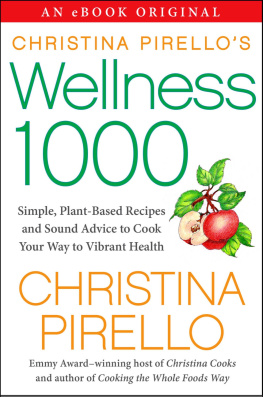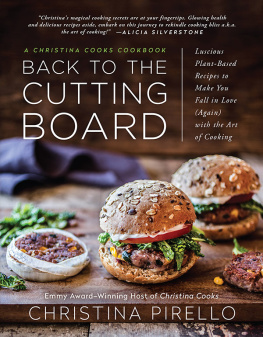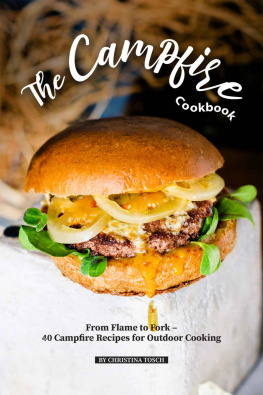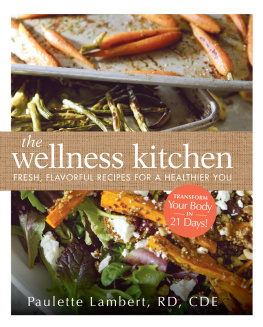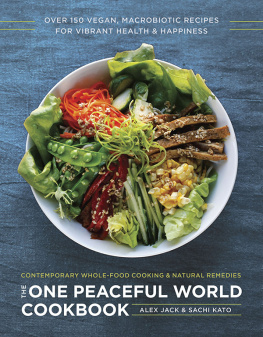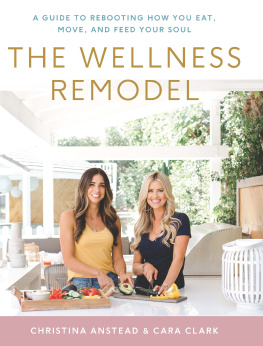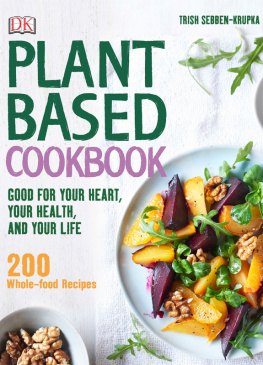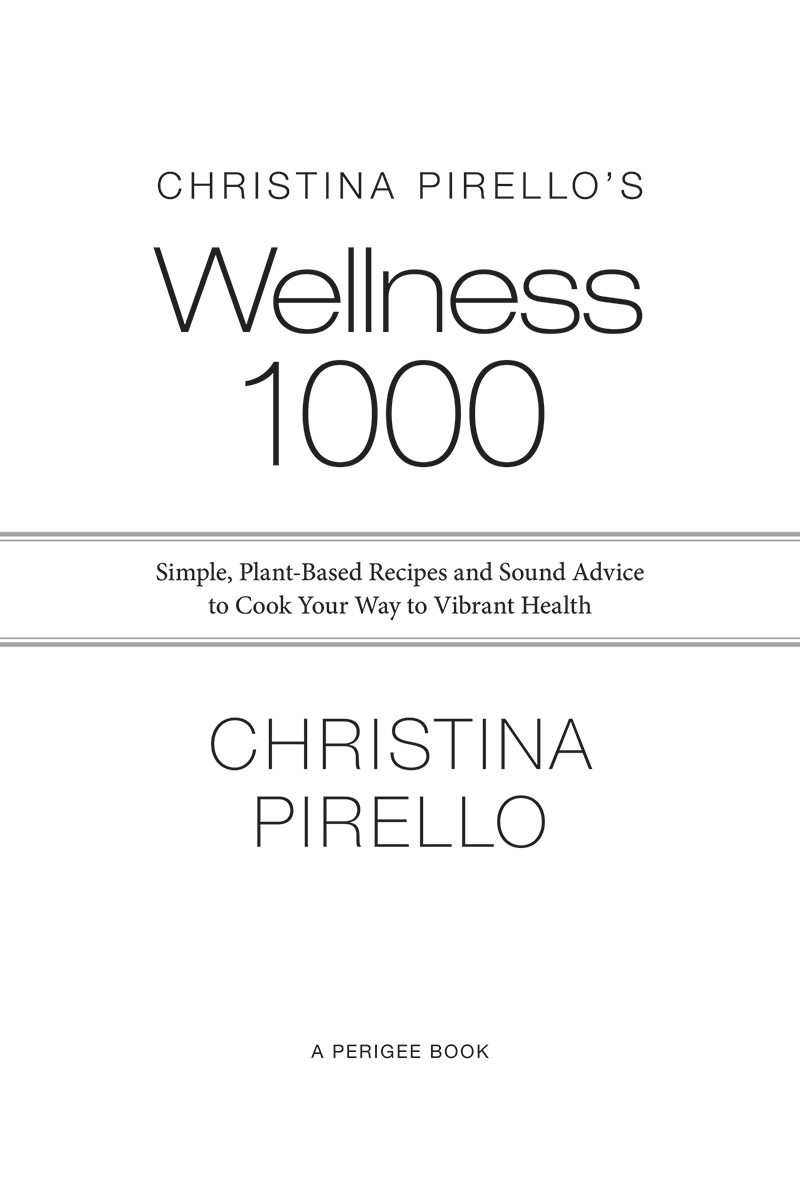A PERIGEE BOOK
Published by the Penguin Group
Penguin Group (USA) LLC
375 Hudson Street, New York, New York 10014
USA Canada UK Ireland Australia New Zealand India South Africa China
penguin.com
A Penguin Random House company
CHRISTINA PIRELLOS WELLNESS 1000
Copyright 2013 by Christina Pirello
Interior photos copyright by Jason A. Bleecher, Michael Russo Photography, and Maja Penanic
Penguin supports copyright. Copyright fuels creativity, encourages diverse voices, promotes free speech, and creates a vibrant culture. Thank you for buying an authorized edition of this book and for complying with copyright laws by not reproducing, scanning, or distributing any part of it in any form without permission. You are supporting writers and allowing Penguin to continue to publish books for every reader.
PERIGEE is a registered trademark of Penguin Group (USA) LLC.
The P design is a trademark belonging to Penguin Group (USA) LLC.
ISBN: 978-0-698-13761-5
First edition: November 2013
The recipes contained in this book are to be followed exactly as written. The publisher is not responsible for your specific health or allergy needs that may require medical supervision. The publisher is not responsible for any adverse reactions to the recipes contained in this book.
While the author has made every effort to provide accurate telephone numbers, Internet addresses, and other contact information at the time of publication, neither the publisher nor the author assumes any responsibility for errors, or for changes that occur after publication. Further, the publisher does not have any control over and does not assume any responsibility for author or third-party websites or their content.
Most Perigee books are available at special quantity discounts for bulk purchases for sales promotions, premiums, fund-raising, or educational use. Special books, or book excerpts, can also be created to fit specific needs. For details, write: Special.Markets@us.penguingroup.com.
Version_3
To Sara, Ben, Little Jen, Olivia, Caitlin, Emma, and my Jagger: the kids in my life who make my work essential and my world a better place. I adore you.
Contents
Introduction
Why do we cook?
Thats a big question, considering that youre reading a book that contains 1,000 recipes, wouldnt you say?
Anthropologists tell us that cooking is what ultimately makes us human, differentiating us from other species in that cooking created community. We gathered around the fire... cooking and eating together.
They also tell us that cooking helped us to predigest food, fueling our brains more efficiently, allowing us to evolve into having larger brains with a capacity for creativity and smaller guts (well, most of us...) since we could spend less time (actual hours) chewing. Once our brains evolved, we became the community of humans we are today, for better or for worse.
All of this is very insightful thinking and theorizing (the result of big, well-nourished brains) that helps us to understand the very wide and diverse ramifications of cooking.
Cooking is so much more than abstract theory. I have cooked for most of my life, since discovering the joys of the kitchen as a young child. The impact of cooking on my life is without measure, from working side by side with my mother at the stove, learning the art of cooperation, to literally saving my own life in my tiny apartment kitchen with what I cooked when I was diagnosed with cancer at age twenty-six.
My connection to food (some say obsession with) drives my every waking breath... but not in the way you might think. I think of my next meal only when its time to shop for it or prepare it. My connection to food is primal and visceral. I know in my soul that the food we choose creates the people that we are and the planet we live on.
There is so much more to food than whats on your plate.
Growing up, there was no question about the food we ate. My mother cooked it. There was no question where we would eat dinner. We gathered around the table daily to eat, talk about our days, and stay connected as a family, creating our own personal micro-community.
Research tells us that about two-thirds of American families say they eat most dinners together, but what does that mean? According to Mark Hyman, MD, research released in 2010 showed that 50 percent of our meals were eaten outside the home, with one in five breakfasts coming from McDonalds. Research also revealed that most family meals take place about three times a week, last about twenty minutes, and consist of packaged, microwaved dinners eaten while we watch television, text, work on computers... or drive in cars.
Hardly the stuff of hearth and home that many of us grew up with.
We say we dont have time to cook. Were too busy and stressed to create meals from scratch in the same manner as our mothers. Yet we seem to find the time to watch other people cook, from rough-around-the edges bakers to cooking competitions, knives flying across cutting boards creating the most bizarre dishes from the most bizarre ingredients to the scintillating viewing (she said, her voice dripping with sarcasm) of people decorating cupcakes. Cooking has become a Coliseum sport, a spectator event, rather than a nourishing act of comfort and love.
And in the chaos of watching other people cook and eat (I absolutely do not get why I should want to watch someone else eat...), we are raising an entire generation of people who do not have mastery of this most basic survival skill... and in fact, cannot recognize and name most fruits and vegetables.
None of this is an accident. Dinner has been hijacked by the food industry, openly and consciously, as food executives worked to convince women everywhere that they had no moral imperative to cook. Let us do it for you was the seductive call. And we followed, glad to pass on the drudgery of the kitchen (cooking is work, after all...) to someone who could, by virtue of chemicals and flavor enhancement make cherry products that taste more like cherries than cherries... and can make anything taste like chicken.
We left the dinner table for dinner in a bucket.
The result is that after millennia of surviving by knowing what and how to eat, we now need experts to tell us how to be healthy, communal humans. What foods to choose, how to prepare them and why we share them as a family and a community have been part of our hardwiring since the dawn of human society and yet, our modern life has left us unable to feed ourselves without the advice and counsel of a nutritionist.
As recently as one hundred years ago, we ate locally produced, natural foodswhat we now call organic. There was no junk food, no drive-through windows, and no frozen food. There was only what your mother or grandmother cooked. We gathered around the fire, socializing as meals filled the house with the perfumes of nourishment.
No one gathers around the microwave watching our frozen dinner heat.
So why 1,000 recipes?
The collective health of our species, our planet, and our food supply are linked in the dance of life. The ecology, if you will, of eating... the impact of what you put on your plate and into your mouth... has never been more essential to our survival. Our modern way of eating is not sustainable, and its crushing us under the weight of disease, waste, and pollution.

